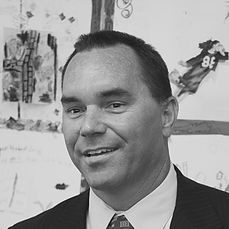Why Mindfulness?
Mindfulness is a buzz word right now, so I want take a moment to address the basic concept of mindfulness and mindfulness practices. These practices and habits are relevant to everyone, but particularly to people in leadership roles. Our responsibilities to the people we lead are wide and deep; not all issues can be focused on at the same time. This can lead to some stress, poor decision-making, and emotional responses that are not always accurate or productive.
By practicing habits that help us be fully attentive in the present moment we can help ourselves be better leaders by calming down our racing minds, settling our emotions, and clearly communicating with people around us. Even more importantly, mindfulness gives us the ability to communicate more clearly with ourselves! This is a gift to ourselves, as well as the people who we work with on a daily basis. As a teacher of mine once told me “your true presence is your greatest present.”
Mindfulness Basics
Generally we begin with very overt ways of settling the mind such as breathing, eating, walking, or sitting. We focus on the breath in order to bring ourselves back from the thoughts of the future events that haven’t happened, the past that we cannot change, and the emotions and thoughts that draw us back and forth through time. We do this because it helps us practice the settling in a way that we can clearly feel in our bodies. This is a great basis to have so that when we move into the more subtle and nuanced practices of mindfulness we can return to the breath and our intention when difficult moments occur.
Our untrained minds wander as a default way of operating and this is very useful for some aspects of our existence. However, we do need to know how to bring our minds back to the present and not be distracted, particularly by the habitual thinking we may have that does not serve us well. To this end we settle the body to settle the mind. These practices are not simply relaxation techniques but more of a familiarization and cultivation of how we can focus our wandering mind.
Your Mind, the Snow Globe
It may be helpful to conceptualize a snow globe: those little globes of water with a picture inside. If we shake the snow globe the small flakes of snow dart about in the flow of water. With the tumult we cannot see the picture clearly because of the rush of flakes; this is like our mind when it wanders. Our snowflakes are the thoughts that whirl about. Only when we stop shaking the snow globe of our mind can we clearly and accurately see what image, what thoughts, are truly present in our mind. Mindfulness practices and habits help us stop the constant whirling of thoughts and allow us the space to see clearly, understand more accurately, and settle and let go of the difficult emotions which may not be needed nearly as often as we may think.
Practicing mindful moments doesn’t take much time or effort when we have the habits practiced. Many people who practice mindfulness may only need seconds to come back to the present moment when they get distracted, stressed, or rushed. The beauty is two-fold: we can practice anywhere and it doesn’t take much time!
There are many ways to integrate mindfulness into your daily routine. I’d like to leave you with one practice I particularly like and maybe you haven’t been introduced to before.
Mindful Doorways Practice
Let’s practice looking at how you pass through doorways. When you enter a room, specifically look at the doorway and take one deep breath for three seconds. As you exhale for six seconds think about your breath leaving your body.
As you step into the room, look at the room, the people, the furniture, the papers, and think carefully about how many people it took to put all of those physical resources into that space.
Next, consider the people that are actually in that room and all they went through in their lives to end up in that place with you. Many of them have stress, family issues, a full day of both success and failure, feel unappreciated, feel happy, feel sick, or wish they were somewhere else (yes, even though you are FASCINATING to meet with). What is one thing you are thankful for about one of those people?
If you are the only person in the room consider everything YOU have gone through and inventory how you feel. What is one thing you are thankful for today about yourself, your habits, or your focus?
Once you have these thoughts move on intentionally with your interactions and work. Mindful doorway practice is one way to remind us that each new space can be a new realm of experience in our day.

